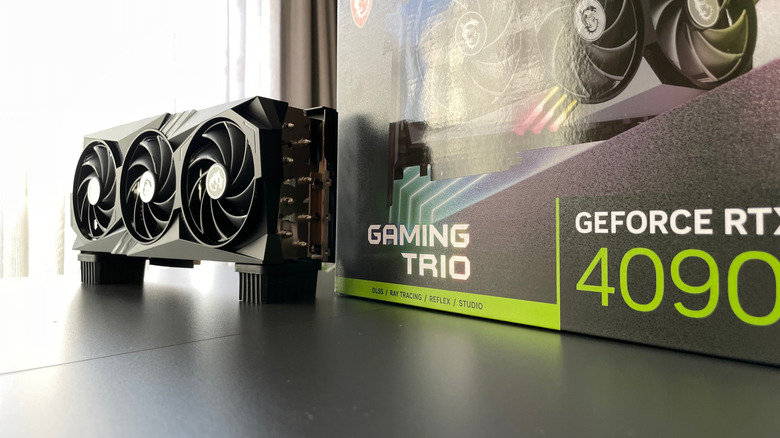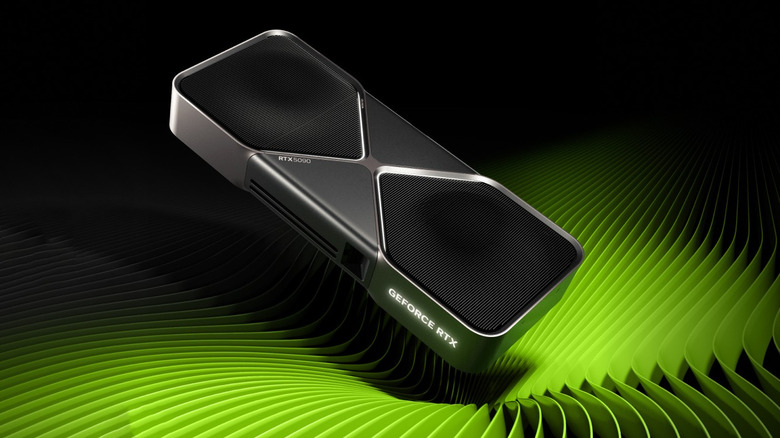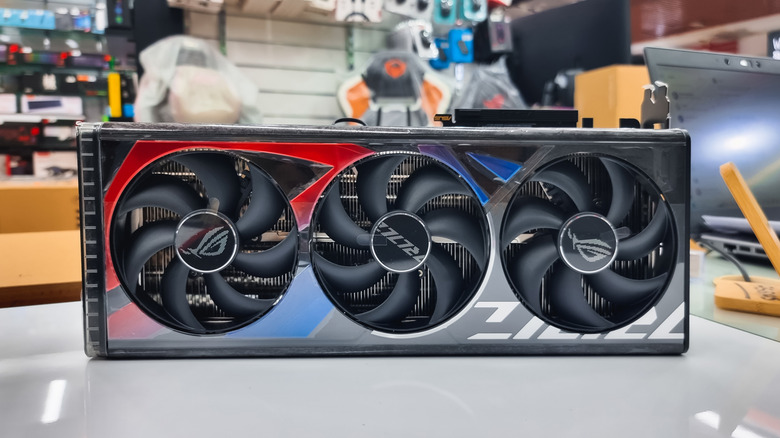Why You Don't Need To Upgrade To The RTX 5090 If You Already Have An RTX 4090
Nvidia's RTX 5090 is, without a doubt, one of the most powerful graphics cards for your gaming PC. In terms of raw performance and capabilities, it's the fastest graphics card right now. That makes it a tempting pick for just about anybody with a spacious budget, from demanding gamers to content creators. However, there are many reasons why you don't need to buy one, and those reasons are only amplified if you already own an RTX 4090. As a PC builder and GPU expert, I've spent the better part of the last decade covering every graphics card launch. Based on my experience, I'm here to tell you to save your money and skip the RTX 5090 if you already have the last-gen flagship.
The temptation is real; I fully get that. I write about graphics cards day in, day out, and I am fighting a constant battle against my own common sense when it comes to buying new upgrades. Still, I know that some upgrades make more sense than others, and right now, most people don't need an RTX 5090, especially if they already own an RTX 4090. On paper, we're looking at two different graphics cards. The switch to a new generation, a different process node, and a boost to specs gave the RTX 5090 a whole new set of capabilities.
Let's not forget the switch to Deep Learning Super Sampling 4 (DLSS 4), which dials up the frame generation from 2x to 4x. DLSS 4 is perhaps the biggest pro of upgrading to NVIDIA's new RTX 50-series, but in the RTX 5090, its impact is diminished by the fact that the GPU hardly needs it. It can handle everything without those extra AI-generated frames.
RTX 5090 vs. RTX 4090 specs
Without beating around the bush: The RTX 5090 is more powerful than the RTX 4090, and the specs will give you a good overview of that. All specs aside, Nvidia introduced some architectural improvements in Blackwell (the generation that the RTX 5090 belongs to) that targeted efficiency and performance. Beyond that, the RTX 5090 is simply decked out with better specs. It sports 21,760 CUDA cores, 170 fourth-gen ray tracing (RT) cores, 680 fifth-gen Tensor cores, and a boost clock of up to 2.41GHz. It also offers a sizeable memory upgrade, delivering 32 GB of GDDR7 VRAM across a massive 512-bit interface.
The switch to GDDR7 results in much faster memory speed, reaching 28 Gbps. Meanwhile, the RTX 4090 offers 16,384 CUDA cores, 128 third-gen RT cores, 512 fourth-gen Tensor cores, a max frequency of 2.5GHz, 24 GB of GDDR6X memory across a 384-bit bus, and 21 Gbps memory speed. These changes in VRAM result in a massive bandwidth increase for the RTX 5090, reaching 1.79 TB/s versus the RTX 4090's 1.01 TB/s. The newer GPU munches on electricity like it's candy, though. It has a total board power (TBP) of 575 watts, whereas the RTX 4090 sticks to 450 watts.
So, yes, the RTX 5090 sports a sizeable boost to specs compared to its predecessor. However, those are specs added on top of what was already a mighty powerful GPU. Gamers who own an RTX 4090 already have a card that'll breeze through every AAA game for the next few years; getting some more CUDA cores or an extra 8GB VRAM is nice, but unnecessary.
RTX 5090 vs. RTX 4090 performance
Specs are one thing; it's important to put them in the right context by comparing GPU performance. TechRadar benchmarked the RTX 5090 and the RTX 4090 extensively at 4K and 1440p. At 1440p, the RTX 5090 was about 20% faster in gaming, and up to 26% faster with ray tracing enabled. At 4K, those numbers improve in the RTX 5090s favor: The new flagship averages about 26% higher in terms of maximum frames per second (fps), and around 34% with ray tracing enabled. Those are sizeable gains, to be sure, but they're a far cry from the performance improvement we've witnessed when going from the RTX 3090 to the RTX 4090.
Some benchmarks rated the RTX 4090 as about 80 to 90% faster than its predecessor. Finally, let's talk pricing, which really ties the whole argument together. If you already have an RTX 4090, chances are you paid $1,600 to $2,500 for the card. It can comfortably run every single game right now at max settings. In titles such as "Cyberpunk 2077," you might have to enable frame generation if you're playing at max settings with ray tracing enabled, but DLSS gets you to a comfortable place with your frame rates. Even gamers with a 1440p or a 4K monitor will find nothing to complain about.
Meanwhile, the RTX 5090 launched at $2,000, but good luck finding it at list price. The GPUs range from $3,000 to $4,500 and are often bought from scalpers. Think of it this way: Is an extra 20% fps going to be worth $2,500 and up, considering you're already able to game at max settings? I'd say no, which is why you're fine sticking to your RTX 4090.


